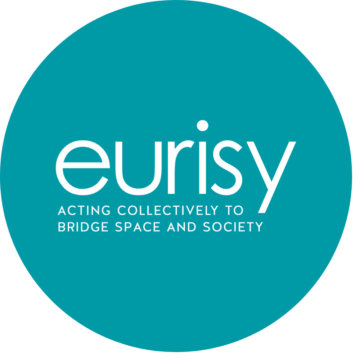Eurisy Members’ Corner: Focus on the FFG Austrian Research promotion Agency.
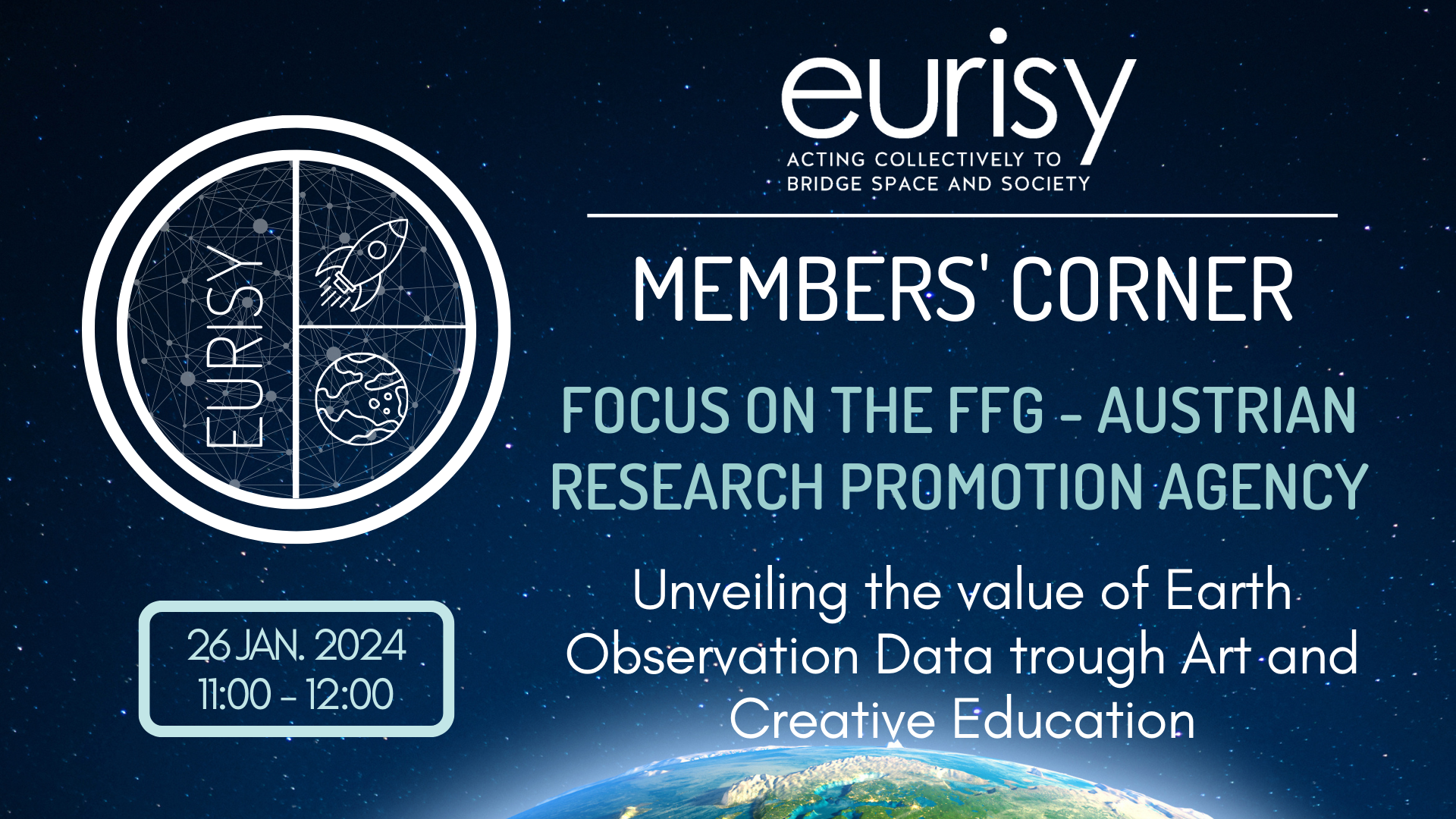
Unveiling the value of Earth Observation data through Art and Education
“If you want to reach out about Science and Space topics outside your community, Art is a wonderful place where to do that.”
Andreas Bauer (Ars Electronica)
On the 26th of January, the first episode of Eurisy’s Member’s Corner of 2024 has been co-organised with the Austrian Research Promotion Agency (FFG) and Ars Electronica Centre of Linz.
During the webinar, the speakers explored the powerful synergy between Art and Earth Observation, introducing initiatives at the intersection between the cultural creative sector at large, and space. The partners also provided an extensive overview of the current educational activities in Austria poised to inspire and motivate the young generations into STEAM education.
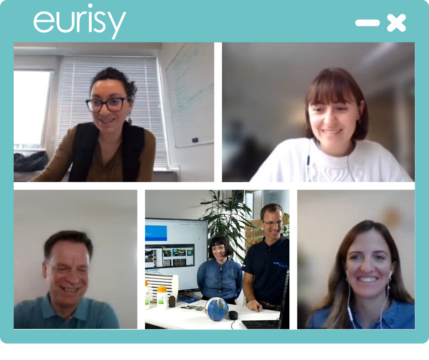 From FFG, Konstanze Fila, Earth Observation Expert and Head of Summer School Alpbach, together with Thomas Geist, Head of Earth Observation Department and Copernicus contact point introduced the Agency, and its role in strengthening research and innovation primarily in the country.
From FFG, Konstanze Fila, Earth Observation Expert and Head of Summer School Alpbach, together with Thomas Geist, Head of Earth Observation Department and Copernicus contact point introduced the Agency, and its role in strengthening research and innovation primarily in the country.
As part of FFG, the Aeronautics and Space Agency (ALR), has the function of the national space agency, represents Austria on international aerospace fora, including ESA, EUMETSAT, etc. and implements the Austrian Space Application Programme (ASAP), among others.
Today, the growth of the Austrian space ecosystem is guided by the Austrian Space Strategy 2030+, developed by the Ministry of Climate Action, Environment, Energy, Mobility, Innovation and Technology back in 2021. The The strategy, eloquently titled “People, Climate, Economy: Space is for everyone” it addresses six main domains:
- Sustainable development on Earth, aimed at demonstrating the potential of space technologies and their applications to support the global sustainability, UN 2030 Agenda and the 17 Sustainable Development Goals (SDGs), but also sustainability in Space, as the increased use of space on Earth requires a thorough focus also on the space sustainability. Specific attention is thus devoted to space traffic management and collision avoidance, as well as the implementation of UN guidelines for long-term sustainability of Outer Space.
- Competitive Space Sector, another key pillar of the strategy is related to the development of measures to boost the local space value chain creating high-skilled jobs.
- Scientific excellence for Space and Earth exploration. The last three goals, which focus more on the social perspective, are intended to support the universal use of space data and capabilities as an integral part of everyday life.
From the goal Space for all areas of life, an important attention is also given on the Talents and diversity for Space, intended to spark the interest of the younger generation for space and STEM disciplines, and enable a Space dialogue with the population, focusing on the importance to develop a strategy that would lead to a well-informed public on the crucial role space technologies have in the daily lives.
FFG is also the national entity responsible for the management of the ESERO Office Austria. ESERO is the ESA umbrella initiative for the development of science and technology related projects, engaging both students of different grades and level as well as teachers.

ESERO AUSTRIA WEBSITE
The Climate Detective project allow schools across Europe to identify a climate-related problem and investigate it using satellite images and on-site measurements. Other activities are more focused on technology capacity building like CanSat, where teams are tasked to build a satellite the size of a drinking can, or the AstroPI challenge, where students are given the possibility to run their codes on the ISS.

FFG also presented the Summer School Alpbach, an opportunity for 60 engineering and science students of ESA countries to participate in a ten-day learning experience in the village of Alpbach in the beautiful Austrian Alps.
Participants will be engaged in an in-depth learning experience, attending stimulating lectures on relevant aspects of space science and engineering, and working intensely within four groups to define and design a space mission under the supervision of experts. An exciting opportunity for students to be exposed to a range of space topics, as well as to develop a team-working spirit and to share a unique experience with other young space enthusiasts.
This year’s topic will be Giant Planets and their Moons.
Identified as the first scientific theme in ESA’s new long-term scientific plan (Voyage 2050) for large missions, the moons in the outer Solar System, but also their host gas and ice giant planets are of the highest interest for the understanding of our own planetary system, representing for this reason an exciting and challenging topic for this year’s Summer School.
The application process is now open!
Check out the website to learn about the participation criteria and other relevant information.
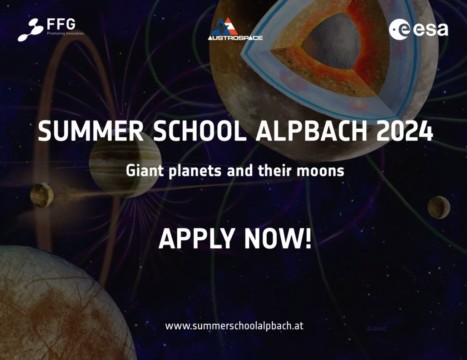
With Andreas Bauer, responsible for organizational operations and cooperation with partners and international institutions at Ars Electronica, we explored the Centre’s vision and ambitions for the future, as well as the educational activities it supports.
Founded as a festival in 1979, Ars Electronica, is an Austrian cultural, educational, and scientific institute active in the field of new media art, focused on the interlinkages between art, technology, and society, it hosts today roughly 170.000 visitors per year.
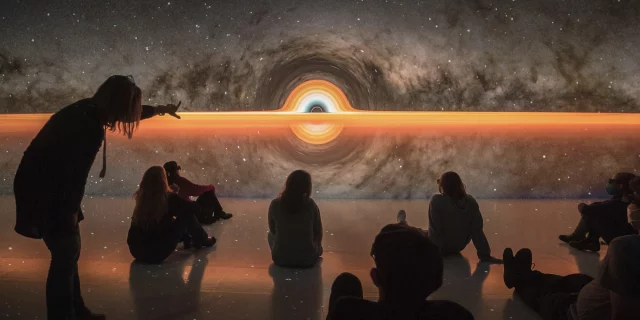
ARS ELECTRONICA DEEP SPACE 8K Exhibition
Ars Electronica presented the exhibition “Beyond the Satellite- CORINNA Copernicus for Research and Innovation in Austria”, an interactive exhibit showcasing the beauty of our planet captured by the images of Copernicus.
Developed by Manuela Gruber, art mediator, exhibition developer, and curator, at Ars Electronica, in collaboration with FFG and the European Commission, the exhibition explores innovative ideas to spark curiosity about space in the general public.
The art installation, designed as a multiscreen setup shows different “data windows” and enables the audience to interact with it.

Showcased for the first time in September 2023 during the Ars Electronica festival, and later at the FFG Forum in Vienna, and at the Big Data from Space 2023: BIDS Conference in Vienna.
“The plan was to show the beauty of satellites in a public space […] People don’t know about the aesthetics of satellite imagery: the question was- how can we combine showing the beauty of aesthetics and provide also information?”
Manuela Gruber
The main ambition is to bring the exhibit into new public spaces, from railways stations to airports, to connect even more people with EO and space.
An example of the cultural initiatives let by ARS Electronica, is KOMETOR.
Originally developed by Manfred and Billa Hebenstreit back in 2010, KOMETOR is a walk-in sculpture made of pentagons hosting exhibitions, events, and an 8m high Sky Dome, build to catapult visitors into an art cosmos of colours and sounds.
Manuela Gruber has been also the curator of “Theme Cosmos – New Worlds” an experience accompanying visitors into a journey from micro to macro cosmos, discovering nature of the universe from different perspectives.
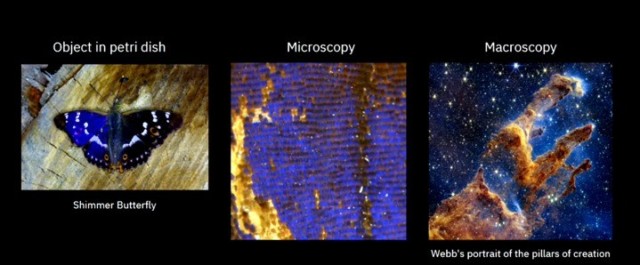
The project showcases microscopic imagery of common objects and create an aesthetics path, juxtaposing macro images of the Cosmos from ESA satellites and telescopes. The similarities are designed to explicit universal interconnections.
Andreas Bauer also presented an example of the education activities supported, and showcased how teachers can engage with their students using EO and satellites. The example was an experiment based on an exposure procedure which uses an ultraviolet sensitive liquid to recreate images on paper using a negative copy of a satellite image.
“At Ars Electronica we believe you have to take a different approach in order to attract a new target which is outside of your group zone.”
Andreas Bauer.
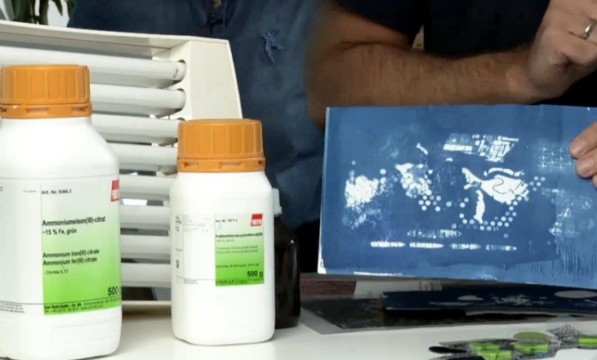
This Member’s Corner aimed to showcase how visual arts and innovative educational activities can unlock the mysteries of data and make complex scientific concepts accessible and engaging for diverse audiences.
As stated by Andreas Bauer, “Art not only educates, but also sparks curiosity, inviting individuals to delve deeper into the variety of topics that Earth Observation can contribute to.”
The multidisciplinary aspect of Space was in the spotlight, emphasizing how this domain, which might look like the realm of scientists from the outside, is inherently present in so many other disciplines and realities. From this viewpoint, the creative sector was presented as a powerful domain where innovative interconnections between Art and Space can be developed, which could be the key to a change in perspectives, helping people understand the importance of Space in their daily lives.
Stay tuned for the next webinar of the Eurisy Members’ Corner!
